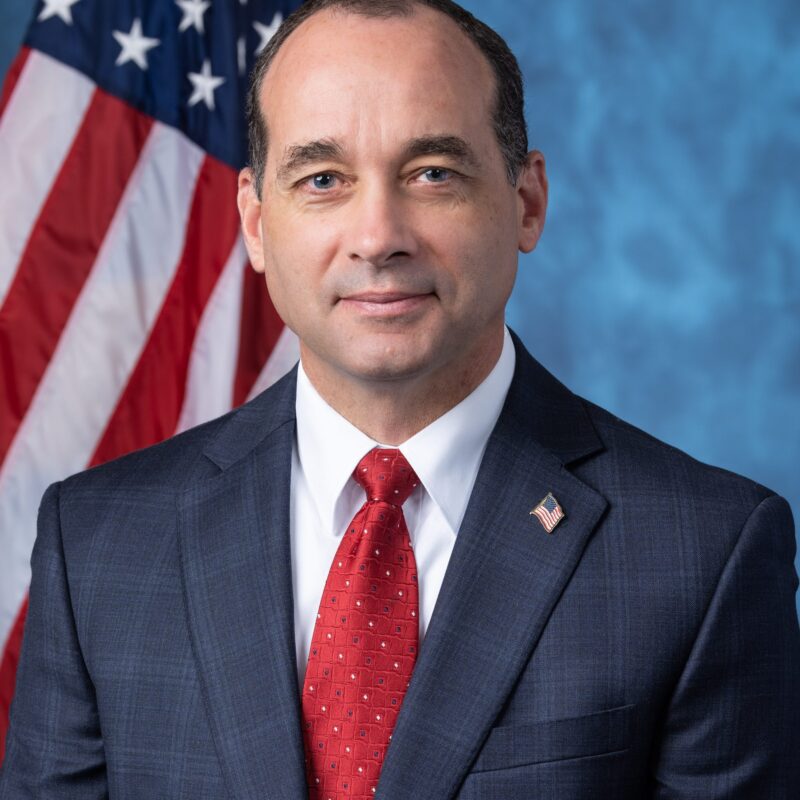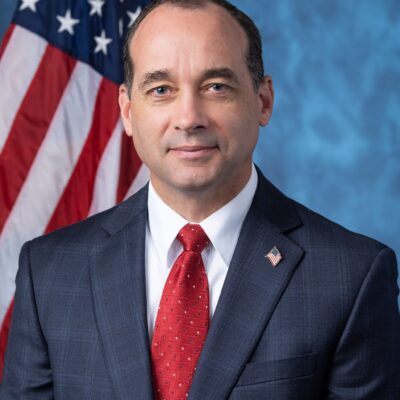
Pure white clouds float through a blue sky; pine-covered mountains cast their emerald reflections across a clear lake; a child’s muddy hands cradle the precious root ball of a tiny tree.
The images appear against a green-and-purple background on the website for the Clean and Safe Energy Coalition. Scroll down, and there’s the smiling faces of Christine Todd-Whitman, former head of the Environmental Protection Agency, and Patrick Moore, a founder and former leader of Greenpeace, with the message that “today and for our future, nuclear power is a safe, clean, reliable and cost-effective way to balance our energy demands and protect our environment.” Yes, you read that right—a founder of Greenpeace is a nuke cheerleader.
Officially launched on Monday, April 24, the Clean and Safe Energy Coalition represents a new attempt to market nuclear power as good for the environment. The industry that, to many people, conjures images of iridescent waste and three-eyed fish now wants you to believe that nuclear power is the answer to the problems of air pollution and global warming.
The public relations blitz comes as the Bush Administration plans to jump-start America’s nuclear industry. In August 2005, Bush signed an energy bill that kicks the nuclear power industry a reported $12 million to add to the 103 nuclear plants currently operating in the United States. Around the same time, the Nuclear Regulatory Commission changed its rules to streamline the approval process for new nuclear plants.
Richmond-based Dominion Energy, Inc. is the first company to take advantage of these recent federal incentives. As Dominion seeks approval for two new nuclear reactors on Lake Anna in Louisa County—just 30 miles east of Char-lottesville—the company is trying to recast nukes as the healthy choice for an eco-conscious America.
“I think this is a reflection of the fact that global warming and climate change is a top
 message of most environmental groups,” says David Lochbaum, director of the Nuclear Safety Project for the Union of Concerned Scientists. “This is an attempt to co-opt that message.”
message of most environmental groups,” says David Lochbaum, director of the Nuclear Safety Project for the Union of Concerned Scientists. “This is an attempt to co-opt that message.”
Wearing of the green
As the Cleveland Plain Dealer and other news outlets reported last week, the Clean and Safe Energy Coalition is funded by the Nuclear Energy Institute, the nuke lobbying group that collects dues from companies like Dominion. The NEI funding includes paychecks for Whitman and Moore.
Whitman, you may remember, is a former governor of New Jersey who headed the Environmental Protection Agency under George W. Bush. There she championed
so-called “free-market environmentalism,” a regulation theory that relies on companies to institute voluntary programs. Bush’s “Clear Skies” is an example of just such an initiative. Whitman resigned from the EPA in May 2003 and formed the Whitman Strategy Group, a consulting firm that provides “crisis management” and “issues management,” while also “brokering agreements among public, private and nonprofit sectors,” according to its website. The Star-Ledger of Newark, New Jersey reported that Whitman’s first ongoing client was FMC Corporation, a chemical company that was in the process of negotiating with the EPA over cleanup of a factory site contaminated with arsenic. The paper quoted her saying that she would advise the company on “how to improve their image.”
It is Patrick Moore, however, who has drawn the most outrage from environmentalists for his role as pro-nuclear spokesman.
On Sunday, April 16, The Washington Post published a column from Moore titled “Going Nuclear: A Green Makes the Case.” Moore began the column by saying that, when he helped found Greenpeace in the early 1970s, he thought nuclear power was “synonymous with nuclear holocaust.” But, he continued, his mind was changed when he was confronted with a different potential disaster: global warming.
Moore argues that 600 coal-fired plants in the U.S. produce 10 percent of the world’s carbon dioxide emissions (carbon dioxide is the main “greenhouse gas,” emissions that are widely accepted to be the main catalyst for global warming). Nuclear power does not emit any air pollution, so Moore argues that nuclear energy “is the only large-scale, cost-effective energy source that can reduce these emissions while continuing to satisfy a growing demand for power.”
The Daily Kos blog (a hugely popular liberal and progressive website) lambasted the Post for not revealing Moore’s deep ties with the nuclear industry and other big businesses.
Aside from his duties as co-chair of the Clean and Safe Energy Coalition, Moore is chairman of Greenspirit Strategies Ltd., a consulting firm that works not only with the nuclear industry, but other potentially environmentally damaging businesses, such as logging, mining, biotechnology and plastics. Among other things, Greenspirit helps these businesses with “sustainability messaging.”
According to Sourcewatch (www.source watch.org), Moore worked with Green-peace from 1977 to 1986, campaigning against whale and seal hunting, uranium mining, and nuclear warships. Since then, however, Moore has used his Greenpeace cred to support mining, logging, nuclear power, hazardous waste and biotech companies—and, in the process, helped to discredit their critics.
On Friday, April 21, the Post printed fierce rebuttals to Moore’s column. The most stinging was by John Passacantando, the current executive director of Greenpeace. “The only thing ‘green’ about Patrick Moore these days are the dollar bills lining his pocket from corporate interests,” Passacantando wrote. “By exploiting his early ties to Greenpeace, Patrick Moore portrays himself as a prodigal son who has seen the error of his ways, but he is really a spokesman for the nuclear energy industry.”

Louisa’s good neighbor
Dominion’s North Anna Nuclear Power station sits at the end of a picturesque country road on the western edge of Lake Anna. Security guards with flak jackets and automatic rifles use mirrors to check a car’s undercarriage for explosives.
Dominion’s pitch for a new nuclear age begins at the North Anna Nuclear Information Center, a kid-friendly interactive museum explaining the ins and outs of nuclear power.
“We can’t rely on any one power source,” says Information Center Coor-dinator Mike Duffy. “Solar and wind definitely have their niche, but we have to think about how to generate power 24 hours a day. Conservation isn’t going to solve anything. We’re talking about places like the Pentagon and the Norfolk Navy Base,” not to mention Dominion’s largest customer, Fairfax-based America Online. Currently, America derives about 20 percent of its energy from nuclear; 50 percent comes from coal, 18 percent from gas, 7 percent from water and 2.2 percent from renewable energy like wind and solar.
On a tour of the plant, Dominion is eager to tout safety, and show that nuclear power has gotten a bad rap. The first stop on the tour highlights what is perhaps the greatest environmental concern about nuclear power—radioactive waste.
All the nuclear waste ever produced by North Anna’s two reactors is stored at the facility, most of it housed a few yards away from a little-used driving range. Down a road lined with a labyrinth of Jersey walls, surrounded by a cy
clone fence and razor wire, and monitored with security cameras, most of North Anna’s waste sits in about two dozen dry storage casks that look, from a distance, like oversized porta-potties. If you could get close enough to the storage casks to stand beside them for one hour, you would absorb about the same amount of radiation as a dental X-ray, according to Dominion spokesman Richard Zuercher.
Standing on the driving range, visitors can also see a pair of domes that Duffy cutely calls BRTs—Big Round Things. These large domed objects house North Anna’s two nuclear reactors. The containment units—with four-and-a-half-foot-thick concrete walls lined with carbon steel—could protect the reactor inside from a direct hit by a jet airliner, says Duffy. The air pressure inside the BRTs is lower than the pressure outside, so a leak would suck clean air in instead of sending contaminated air out.
Inside, the nuclear reactor is basically a big steam engine that uses uranium instead of coal. Uranium is contained in ceramic pellets housed in alloy rods. A nuclear fission reaction boils water, producing steam that turn a pair of massive Westinghouse turbine generators, each the size of a mobile home, spinning at 1,800 rpm. Together, these generators produce about 1,840 megawatts of electricity—enough to satisfy about 17 percent of Virginia’s total demand.
Besides the spent uranium, the only discharge from North Anna is warm water, which spills into a 3,400-acre cooling lagoon. “The fishing is really good right there,” says Zuercher, pointing to the spot where rippling water flows from the plant. After flowing about eight miles, the water returns to Lake Anna.
Visitors touring the facility note that it is absolutely spotless, without a speck of dust on the maze of pipes, and that armed guards shadow guests around the facility. “This station is regarded as one of the top sites in the industry,” says Dominion engineer Jay Leberstien. “We take pride in our work.”
The Nuclear Energy Institute conducted public opinion polls in Louisa County before moving forward with Dominion’s current attempt to build two new reactors at North Anna, and, as expected, their plans have not encountered massive resistance from residents. In this county of about 27,000, Dominion employs about 1,000 people at the North Anna facility, and last year it paid the Louisa government nearly $11 million in real estate and personal property taxes.
Clean and safe?
After the tour, Eugene Grecheck, Domin-ion’s vice president for Nuclear Support Services, sits down with a reporter and hands him a 40-page PowerPoint printout. “I think this is the presentation we gave to the Sierra Club,” he says.
Here, briefly, is Grecheck’s pitch for a new nuclear age.
•Demand for power is skyrocketing: Every-body wants electricity. China, India, along with dozens of countries in Africa and Asia, are all ramping up their consumption of coal, oil and natural gas. All of these burning fossil fuels will spew more and more greenhouse gasses into the air, a situation that causes scientists like James Lovelock (who coined the term “greenhouse effect”) to predict that, by the end of this century, many of the world’s coastal cities will be flooded by melting polar ice caps, and much of the planet will be too hot for farming.
Lovelock says nuclear power is the only way to curb greenhouse gas, and—unlike Patrick Moore—he’s not known to be a paid shill for nuclear companies.
Because auto emissions cause most air pollution, many experts predict that nuclear power could be used to produce hydrogen fuel cells for emission-free vehicles.
•Renewables are not ready: Environmen-talists say they would rather see heavier investment in renewable energy, like solar cells and high-tech windmills. Renew-ables, however, cannot currently generate the massive amounts of electricity needed to replace coal.
•Nuclear power is cheap: Grecheck says that in 2004 the production costs for nuclear power fell to less than 2 cents per kilowatt hour—lower than coal, gas or oil. As the federal government standardizes the design for nuclear plants, the cost of building them should decrease, Grecheck predicts.
•Nuclear power is safe: The reactor meltdown at Pennsylvania’s Three Mile Island is actually a success story, Grecheck says, not a black mark of failure. The plant’s containment vessel worked exactly as it was designed to, and no radiation escaped into the environment. The Soviet Union’s 1986 Chernobyl explosion, by contrast, was a disaster caused mostly by poor design—the reactor had no containment vessel.
The federal government is currently trying to surmount political obstacles and approve storage of nuclear waste below Nevada’s Yucca Mountain. In the meantime, the Feds have recently rescinded a ban on recycling used nuclear fuel, which nuclear advocates say will produce more energy and further reduce the amount of waste.
Still not convinced
Despite the public relations blitz, however, Virginia’s environmentalists are concerned about new nukes at Lake Anna. Recent public hearings on Dominion’s “Early Site Permit” process included a wide range of comments, reflecting both support for and trust in Dominion, as well as concerns about the safety of nuclear power.
“It’s time for Dominion to invest in clean and safe renewable sources of energy, rather than dirty dangerous power like nuclear energy,” says Joshua Low of the Virginia Sierra Club. Wind and solar currently provide less than 1 percent of the national supply. The Bush Administration has vowed to spend $771 million on renewable energy next year—that figure represents an increase after several years of deep cuts, but the budget for renewable energy research is still less than 1 percent of the $55 billion the federal government spends on research each year.
There is no way Dominion can ensure 100 percent safety, he says, and a nuclear accident could be devastating. “In this country we don’t have a real plan to deal with an accident, and we don’t have a plan to deal with radioactive waste,” says Low.
In addition, homeowner groups around Lake Anna (who generally say they do not oppose nuclear power) voiced concerns about how new reactors would affect the lake. Homeowners around Lake Anna worried that a new plant would make the Dominion-built lake too shallow and too warm.
In response, Virginia’s Department of Environmental Quality pushed Dominion to change the design for the proposed third reactor to a system that will cool the water before it returns to the lake.
Nuclear opponent Elena Day, a leader of the local group People’s Alliance for Clean Energy, remains unconvinced.
To Day, all this talk from Dominion about global warming sounds like a dodge, a stall tactic, a bunch of B.S. cooked up by advertising experts.
“It seems like some person from a public relations firm thought: ‘Global warming! The public will really respond to this. We’ll use global warming to sell nuclear power,’” says Day. Meanwhile, she says, power companies and their cronies in Washington can keep using dirty coal plants, they can skimp on research budgets for renewable energy, and continue to ignore the issues of conservation and energy efficiency.
The color of money
Grecheck flinches a bit when asked if Do
minion officially acknowledges that global warming is real.
“That is a national policy decision,” he says. “Dominion’s role is to make sure we have an adequate supply of energy for our customers in light of what national policy may be. If the government decided to do something about carbon emissions, we would have to comply with that.”
So far the Bush Administration has decided to largely ignore the growing scientific consensus, labeling global warming an “unproven theory” and refusing to sign onto the Kyoto Protocols—an international emission-limiting treaty negotiated under the Clinton Administration. So when Bush signed the latest federal energy bill in August 2005 promoting nuclear power, it seemed unlikely that reducing greenhouse gasses was the first thing on his mind.
“It’s a lot of money to spend for a solution to a problem you don’t think exists,” says nuclear safety advocate Lochbaum.
Dominion says it has not committed to building new plants at North Anna. If it does, though, Grecheck says Dominion will not close any coal plants. “There is an increasing demand for energy,” he says. “Nuclear is not a substitution for fossil generation. It is a replacement of what we would have to build otherwise.”
For companies like Dominion, new nuclear reactors are a way to build more power plants at a time when public opinion would make it very difficult to build a new coal-fired plant. Given that Virginia is a deregulated energy state, the Commonwealth is a good place—from Dominion’s point of view—to kick off America’s new nuclear age.
Virginia’s legislature approved deregulation of the state’s power industry in 1999. In regulated states, power companies can only produce as much power as the state needs. In deregulated states, power companies like Dominion can produce as much energy as possible, selling the surplus power on the open market. The move was intended to promote competition, but so far that hasn’t happened in Virginia. Between 2001 and 2003, Dominion earned $860 million more than would have been possible under regulation, and yet experts predict that Virginia customers will soon be paying even more for their power.
This leaves us to absorb the environmental costs of power generation (the American Lung Association give Virginia an “F” for air quality, reporting that 3 million Virginians breathe dangerously polluted air) while Dominion reaps the profits from selling power to other states. Meanwhile, a few new nuclear plants will do very little to curb global warming.
“My biggest problem with the facility is that coal-fired power plants in Virginia are huge emitters of pollutants,” says the PEC’s Holmes. “The point is that Dominion is not going to shut down any dirty coal plants because of a new reactor.”
Nuclear power may indeed be green—but its emerald hue looks a lot more like the color of money for power companies than it does a healthy Virginia pine tree.





